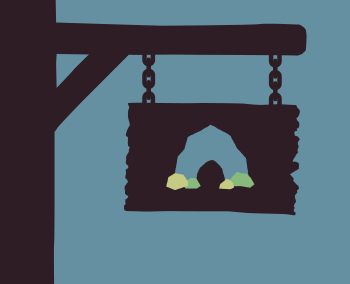Lair Actions
The creature telepathically whispers to one target within its range. The target must succeed on a DC 15 Wisdom saving throw or be charmed until the start of the next round. A target charmed in this way obeys any command to the best of its ability that would not cause it to harm itself directly.
Magical energy swirls across the creature's skin, granting resistance to poison damage until the start of the next round.
A target the creature can see within 120 feet must succeed on a DC 15 Charisma saving throw or become banished to a prison demiplane. The banished target may attempt to escape by using its action to make a contested Charisma check. If they fail, they remain within the demiplane until the start of the next round, reappearing in the same place they left or in the nearest unoccupied space.

Lair Action Generator
Lair Action Examples
•
List of Lair Actions 5e
•
Vampire Lair Actions 5e
•
Lair Actions 5e
•
Devil Lair Actions 5e
•
Lich Lair Actions
•
Lair Actions 5e Ideas
Lairs are alive with the sound of magic.
Lairs are far more than caves or burrows where monsters dwell. As a creature achieves legendary status, its shelter becomes a conduit for the latent magical energies collected over time. Though they may start as a creature's home, lairs evolve into the embodiments of their inhabitant's emotional and magical propensities. They become defensive and active sanctums for the creature's deepest desires, grandest schemes, and most envious of hoards.
Intended or not, most creatures establish their lairs in areas of powerful magical resonance. These sites often intersect with multiple ley lines of surging magical energy. It could be within a crater where a massive celestial body struck, atop a burial site of a bizarre magical relic, or among the ruins of a long-forgotten magocratic empire. Sites with such arcane saturation often feature additional magic abnormalities like extreme climate zones, areas of wild magic, portals to alternate planes of existence, and even fluctuations in the forces of gravity.
Similar to regional effects, which expand beyond the bounds of a creature's sanctum, lair actions reveal a shared connection to the magical energy that courses through and around the lair. The broad range of magic available to the monsters of Dungeons & Dragons provides opportunities to expand upon actions listed among source books or adventure guides. Like many other aspects of RPGs, lair actions can provide engaging role-playing opportunities and new challenges to seasoned players.
Recommended Products
External links. DNDNames.com may earn commissions from qualifying purchases from these retailers.
Lair actions, how do they work?
As players progress through a campaign, they will undoubtedly stumble through increasingly more formidable encounters. However, merely increasing the challenge rating may no longer test high-level characters or players who have become familiar with the game. When fights become predictable or too easy for an adventuring party, dungeon masters (DMs) may want to consider giving their monster's lair some power.
Trading blows with various weapons or damaging spells until one side yields can get boring. Introducing lair actions gives the environment a feeling of sentience, allowing it to contribute to the battle and affect combat. These "actions" add a new sense of danger to the encounter and can provoke players to strategize instead of hacking and slashing their way to victory.
While legendary actions can also help balance combat, they differ during gameplay. They are additional, functional actions granted to legendary creatures. Generally limited to a few uses per round, legendary actions always occur at the end of another creature's turn. In contrast, lair actions occupy a place at the top of the initiative order, separate from other creatures, and operate more like independent environmental effects within the lair.
Using this feature as a relative entity within the initiative order gives DMs the ability to up the ante when they see fit. Legendary creatures with lair actions typically have an average of four from which the dungeon master can choose. Although, the most dangerous or significant options commonly cannot be used twice in a row. This rule provides players with a necessary, if only momentary, reprieve from a potential onslaught. In these instances, the DM can choose to forgo using an action on the lair's next turn or select a less ruthless option.
Related Game Content
Search the Dungeon Master's Guide
Please note: DNDNames.com may earn commissions from qualifying purchases from these retailers.










